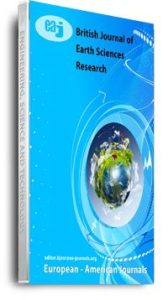The review chronicles morphometric studies of drainage basins across the regions of Nigeria. This is done against the backdrop of the importance of the drainage basin in terms of its morphometric characteristics, water resources exploration, planning and development, and its associated environmental problems of flooding, erosion and drought. Both conventional and non-conventional methods are classified into pre- and Remote Sensing (RS) and Geographical Information Systems (GIS) era, where they were used. The results of analysis showed that the linear, areal and relief attributes of the basin varied across the country. The Nigeria drainage basins range: Basin Area(Ab ) 40.75km2 to 9,926km2, Stream Order(Nu) 3rd to 7th, Stream Number(N) 13 to 9205, Stream Length (Lu) 9.6km to 30,232.80km, Bifurcation Ratio (Rb) 0.9 to 6.0, Drainage Density(Dd)0.03 to 1.27, Drainage Frequency(Nf) 0.01 to 1.35km-1/ km-1, Drainage Texture( Dt) 0.005 to 4.99, Form Factor(Ff) 0.02 to 0.85, Circularity ratio (CR) 0.10 to 0.81, Elongation ratio (ER) 0.14 to 1.40, Length of overland flow(Lg) 0.08-1.95, Infiltration number (IF) 0.02-1.71, Ruggedness number(Rn) 3.68 to 112.59, Hypsometric Integral (HI) 0.22 to 0.99. The basins were found to be predominantly a dendritic system pattern, suggesting that there were no structural controls. Basins with bifurcation ratio below the threshold of 3 to 5 were less susceptible to flooding and erosion while those above are more prone with a strong structural control on the drainage pattern. Catchments with low values of infiltration number were noted to experience higher infiltration and lower surface runoff. Where form factor values are small, the basins are elongated and have low peak flow of longer duration. Whereas basins with high values have high flows of shorter duration.
Keywords: : GIS, Morphometric, RS, basins, streams

